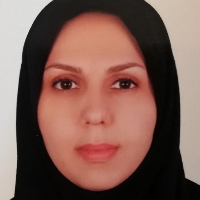Investigating the effects of climate change using the results of the sixth report of the inter-state delegation on the amount of runoff and sediment yield
Climate change is one of the most important challenges that affects natural ecosystems and different aspects of human life. The effects of global warming on the hydrology and water cycle in nature are very serious, and knowing these effects quantitatively creates more preparation to deal with its consequences. It is necessary to evaluate these changes in order to reduce their effects on the basin and formulate a suitable strategy to minimize their adverse effects. This study uses a combined model of SDSM and SWAT to investigate the effects of climate change on the amount of runoff and sediment in Karganrood watershed in Gilan province in Iran. The water measuring station (Mashin Khaneh) is located inside this basin and has a long statistical history. Also, the least amount of land use changes has taken place in this basin, which can better show the results of revealing climate changes on the amount of runoff and sediment.
In order to investigate the consequences of climate change on runoff and sediment, SWAT hydrological model was used. The SWAT model was calibrated and validated by the SUFI-2 algorithm by improving the simulation results of discharge flow and basin sediment. After the implementation of SWAT model, 109 hydrological response units (HRU) were extracted in five sub-basins. After 500 steps of simulation, finally 22 parameters in runoff production and 6 parameters in sediment production of Karganrood watershed were identified as effective parameters. Then, according to the values obtained from NS, R² and RMSE evaluation criteria, it was found that CanESM5 climate model has better accuracy and efficiency than MPI-ESM1.2-HR and NorESM2-MM climate models. By introducing the time series of daily average precipitation and temperature resulting from the output of the CanESM5 climate model and using the SDSM downscaling model, the runoff and sedimentation of the Karganrood basin on a monthly basis at the Mashin Khaneh hydrometric station in the periods of 2026-2050, 2075-2051 and 2100- 2076 for two scenarios SSP2-4.5 and SSP5-8.5. Simulated.
According to the values obtained from NS, R² and RMSE evaluation criteria, it was found that CanESM5 climate model has better accuracy and efficiency than MPI-ESM1.2-HR and NorESM2-MM climate models. The results of the CanESM5 model indicate that precipitation, maximum and minimum temperature will decrease in all future periods based on SSP2-4.5. Also, the examination of CanESM5 model results in connection with SSP5-8.5 shows that precipitation will decrease in all future periods and the maximum temperature will increase in the period of 2051-2075 and 2076-2100. Also, the results of climate data in all three climate models and in both scenarios SSP2-4.5 and SSP5-8.5 showed that the period of 2076-2100 will be drier and warmer than other periods. In order to investigate the consequences of climate change on runoff and sediment using the SWAT hydrological model and by introducing the time series of average daily precipitation and temperature from the output of the CanESM5 climate model and using the SDSM downscaling model, the runoff and sediment of the Karganrood basin on a monthly basis at the station Car house hydrometry in the periods 2050-2026, 2051-2075 and 2076-2100 for two scenarios SSP2-4.5 and SSP5-8.5. Simulated. The results of the SWAT model showed that the runoff changes for the SSP2-4.5 and SSP5-8.5 scenarios will decrease and the sediment changes will increase in all future periods.
Using the output data of the CanESM5 climate model related to the sixth report and under the SSP2-4.5 and SSP5-8.5 scenarios and using the SWAT model, the amount of runoff and sediment in three time periods of the near future (2026-2050), medium (2051- 2075) and period (2076-2100) was carried out. The amount of sediment at the exit point of the Mashin Khaneh water measuring station showed an increasing trend. Also, the results showed that the observed stream flow limit does not match with the SSP2-4.5 and SSP5-8.5 scenarios in the future periods, but the observed sedimentation is compatible with the future periods. The data of the SSP2-4.5 scenario showed that discharge will decrease in all periods and sediment will increase in all future periods. The largest changes in discharge are related to the future period of 2076-2100 and amount to -56.7 percent, and the lowest number of changes in discharge are related to the future period of 2026-2050 and amount to -48.5 percent. The highest sediment changes are related to the future period of 2051-2075 and amount to 54.3% and the lowest amount of sediment changes are related to the future period of 2026-2050 and amount to 5.12%. Also, the results of the SWAT model based on the data of the SSP5-8.5 scenario showed that discharge will decrease in all periods and sediment will increase in all future periods. The largest changes in the flow rate are related to the future period of 2076-2100 and amount to -56% and the lowest number of changes in the flow rate are related to the future period of 2026-2050 and amount to -52.8%. The highest sediment changes are related to the future period of 2076-2100 and amount to 113.27% and the lowest amount of sediment changes are related to the future period of 2026-2050 and amount to 29%. It seems that the decrease in rainfall in the coming periods will cause a decrease in vegetation, especially in late summer and early autumn and with the melting of the remaining snow in the highlands due to the increase in temperature; The amount of produced runoff increases, which will increase the sediment produced in the basin.
-
An analysis of cyclonic dominant patterns on cold period precipitation in the mid-western of Iran
Rastegar Mohammadi, Mohammad Saligheh, Mohammadhossein Naserzadeh*, Mehri Akbari
Journal of Applied Researches in Geographical Sciences, Autumn 2025 -
Analysis of heat waves and their effects on Ecotourism attractions in Khuzestan province
Mehri Akbari, Saeedeh Fakhari*
Journal of Geography and Tourism Planning, -
Sensitivity analysis and study of change of irrigation system on Qazvin Plain aquifer using GMS software
Mahnoosh Jenab, Hadi Ramezani Etedali *, Peyman Daneshkar
Iranian Journal of Irrigation & Drainage, -
Estimation of Leaf Area Index of Maize by Vegetation Indices Extracted from Satellite Imaging
Saeid Jalili *, Masoud Parsinejad,
Iranian Journal of Soil and Water Research, -
Comparison of the efficiency of SDSM and CCT models in climate change studies(Case study of Karganrood watershed)
MohammadReza Sheykh Rabiee, HamidReza Peyrowan *, , , Baharak Motamedvaziri
Journal of Meteorology and Atmospheric Science, -
Evaluating the efficiency of climate change models in simulating temperature and precipitation components(Case study of Karganrood watershed)
, Hamid Reza Peyrowan *, , , Baharak Motamedvaziri
Journal of Geography and Environmental Studies,




